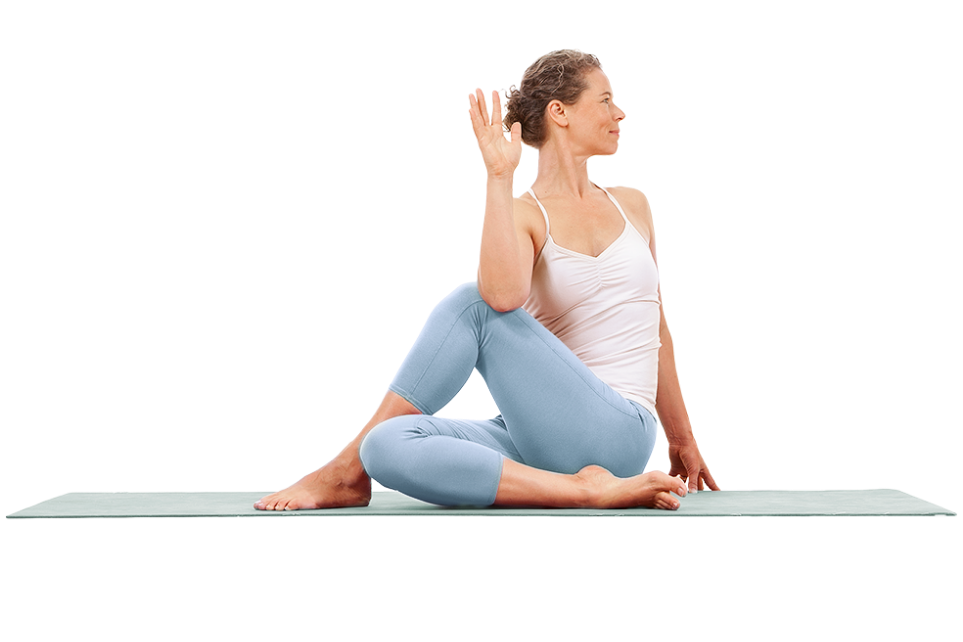The word ‘yoga’ is understood differently by many of us. For some it’s purely a physical exercise, a way to get stronger, healthier and more flexible. For others it’s meditating each day, and for others still, it might mean chanting mantras or worshipping a deity.
If there’s one thing to be sure of though, it’s that yoga offers us a way of life that can be much more transformational than a 60-minute yoga class once a week….
Beyond asana
While all the stretching, twisting, balancing and occasional falling over (or a lot of falling over) is very beneficial, and certainly opens the gateways to a healthier, more vibrant and ‘alive’ sense of being, it is just one branch on a very big tree of yoga. Ancient texts such as the Hatha Yoga Pradipika and The Yoga Sutras focus very little on physical yoga postures (asana). In fact when Patanjali speaks of ‘asana’ he is in no way at all referring to Headstand or Warrior II. He’s talking about the position you choose to sit in while meditating – your ‘seat’. It’s the tantric traditions that focused more on what the body could do, and these texts show more evidence of where the postures come from…
The Yoga Sutras
The Yamas and Niyamas originate from the very well known text ‘The Yoga Sutras of Patanjali’ – which, if you’re a yoga teacher or teacher-in-training, you’ll no doubt be familiar with. We often refer to Patanjali as a sage, but it’s very unlikely that he wrote these texts alone. In fact, it’s far more likely that the texts are the culmination of what a group of Patanjali’s disciples wrote over a period of time.
Patanjali is known as a sage, but it’s very unlikely that he wrote these texts alone. In fact, it’s far more likely that the texts are the culmination of what some of Patanjali’s disciples wrote over a period of time.
Without going into too much detail – the Yoga Sutras are less of a deep and philosophical book than many may think. They’re more like a guide or instruction manual on how to live in order to advance along a spiritual path towards enlightenment.
The Eight Limbs of Yoga
There are eight ‘limbs’ to the Yoga Sutras, each describing a different aspect of the yoga practice, and a different step on the ladder to realisation. They are commonly called the Eight Limbs of Yoga:
- Yama (moral discipline)
- Niyama (observances)
- Asana (physical postures)
- Pranayama (breathing techniques)
- Pratyahara (sense withdrawal)
- Dharana (concentration)
- Dhyana (absorption or meditation)
- Samadhi (enlightenment or bliss)
For an overview of the 8 limbs, read: The 8 Limbs of Yoga explained
The Yamas and the Niyamas
Here, we’ll focus on the Yamas & Niyamas, the first two practices of Yoga according to Patanjali.
After practising yoga for a while, many of us may wonder if there’s more to it than what we do on that mat; and of course, there is.
The idea of a yoga practice is really not just to focus and be aware, mindful and calm for the time that we’re on the mat – but to carry this state of being with us when we leave class and return to our daily life. Sure, we might initially come to class for the physical benefits. But the reason so many of us stay is because there’s an inkling that there’s some other sort of magic at work here….
The Yamas and Niyamas are spoken of as ‘moral codes’, or ways of ‘right living’. They really form the foundation of our whole practice, and honouring these ethics as we progress along ‘the path’ means we’re always being mindful of each action, and therefore cultivating a more present and aware state of being. It’s interesting that these five Yamas and five Niyamas resemble the ten commandments, and the ten virtues of Buddhism. We’re all ‘different’ yet ‘united’ at the same time.
The idea of a yoga practice is really not just to focus and be aware and mindful and calm for the time that we’re on the mat, but to carry this state of being with us when we leave class
The Yamas
The word ‘yama’ is often translated as ‘restraint’, ‘moral discipline’ or ‘moral vow’. Patanjali states that these vows are completely universal, no matter who you are or where you come from, your current situation or where you’re heading. To be ‘moral’ can be difficult at times, which is it’s such an important practice. Remember that the word ‘yoga’ means ‘unity’, ‘wholeness’ or ‘connectedness’; of course it’s important to be mindful, gentle and present in class, but if this doesn’t translate off the mat and connect into what we do in our day-to-day lives, we will never feel the real benefits of yoga.
The Yamas traditionally guide us towards practices concerned with the world around us, but often we can take them as a guide of how to act towards ourselves too. There are five Yamas in total in Patanjali’s Sutras:
- Ahimsa (non-harming or non-violence in thought, word and deed)
- Satya (truthfulness)
- Asteya (non-stealing)
- Brahmacharya (celibacy or ‘right use of energy’)
- Aparigraha (non-greed or non-hoarding)
Click on any of these Yamas to find out more about them.
Other texts describe further Yamas, for example the Śāṇḍilya Upanishad lists a total of 10 Yamas, excluding Aparigraha but including: Ksama (forgiveness), Dhrti (fortitude), Daya (compassion), Arjava (non-hypocrisy, or sincerity), Mitahara (measured diet), and Saucha (cleanliness).
By considering these aspects in our daily practice on and off the yoga mat, all of our decisions and actions come from a more considered, aware, and ‘higher’ place, and this leads us towards being more authentic towards ourselves and others.
Join our program – The Yamas and Niyamas for Beginners
Sandra Carson introduces the Yamas and Niyamas – the first two of Patanjali’s eight limbs of yoga. Learn to view the Yamas and Niyamas through the lens of Asana practice, and begin to embody the tenets of these ancient Yogic teachings.
The Niyamas
The word ‘Niyama’ often translates as ‘positive duties’ or ‘observances’, and are thought of as recommended habits for healthy living and ‘spiritual existence’. Yoga tradition views them as practices concerned with ourselves, although of course we can think of them as affecting the outside world too. Patanjali lists a total of five Niyamas, but again there are other traditions and texts that list more:
- Saucha (cleanliness)
- Santosha (contentment)
- Tapas (discipline, austerity or ‘burning enthusiasm)
- Svadhyaya (study of the self and of the texts)
- Isvara Pranidhana (surrender to a higher being, or contemplation of a higher power)
Click any of these Niyamas to read about them more in-depth, and find out how they apply to different aspects of life.
Iyengar describes both the Yamas and Niyamas as the ‘golden keys to unlock the spiritual gates’, as they transform each action into one that originates from a deeper and more ‘connected’ place within ourselves. Whether you consider yourself ‘spiritual’ or not though, and whether you practise yoga or not, these are all ways in which we can help ourselves and the world around us to be a better place.
If we are to really benefit from a yoga practice, it has to expand beyond the mat and into life. When this happens, it’s not just our bodies that get stretched, expanded and strengthened; our minds and hearts do too. From that state of being, we move ever closer towards wholeness, connectedness and unity, and start to not just ‘do’ yoga, but live and breathe it in each and every moment.


